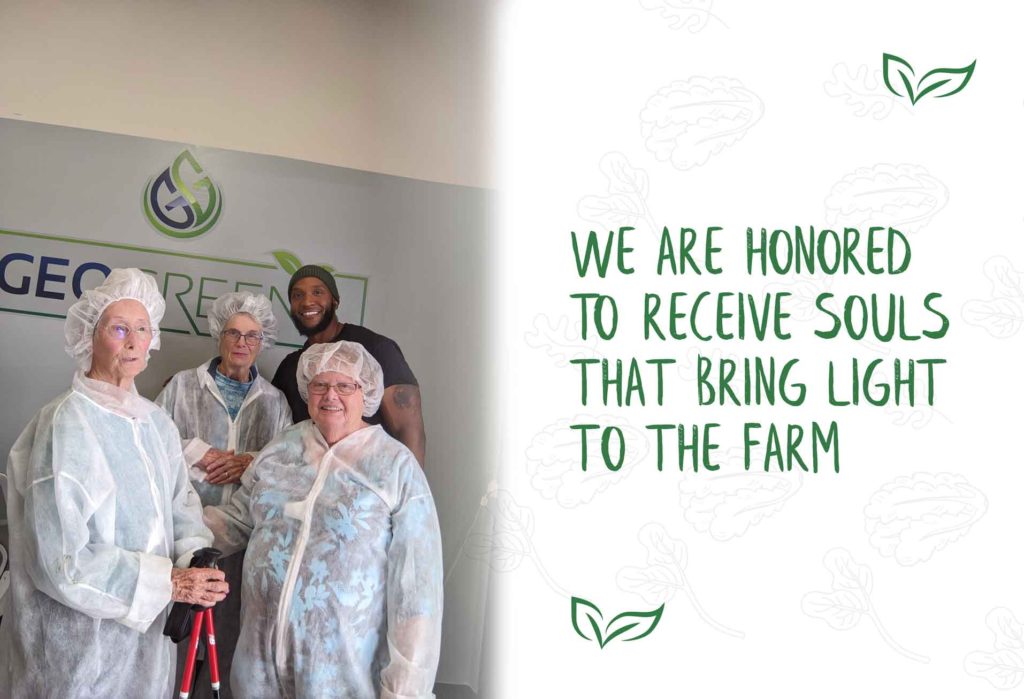
While they’re somewhat new to the dining experience, microgreens, small versions of their larger leafy green vegetable counterparts are making big news. Why all the fuss? Because these miniature veggie versions are hugely sustainable and can be grown quickly indoors without much water or fuss.
According to Colorado State University (CSU), these small versions are in between sprouts and baby greens. Studies have been done that reveal these tender and young growths which can be made from most vegetables, herbs, flowers, and grains, are able to rapidly mature in just weeks. Indoor farming methods allow for their growth virtually anywhere.
That makes them a brilliant move for sustainable practices. They can be grown any time of year without a true garden setting. That means even in the heart of a big city, microgreens can be grown and harvested for consumption.
A study was conducted by CSU aimed to discover whether or not microgreens were an ideal option. In the study, consumers were targeted to find out whether or not they found microgreens appealing. As the need for more sustainable means of food harvesting continues to come into play around the world, this was an important study because not every place has the kind of access to large plots of outdoor soil. Conserving natural resources while providing enough food for the population is a growing concern.
The study’s results were published in the Journal of Food Science. In the study, 99 people were surveyed on their reactions to different types of microgreens including broccoli, arugula, red cabbage, tendril pea, bull’s blood beet, and red garnet amaranth. These microgreens were all grown in CSU’s Horticulture Center and none of the participants knew in advance what they would be tasting.
The most common nickname awarded to these microgreens was ‘vegetable confetti.’ They found these small plants colorful and full of flavor. This is why many of these things have been used to finish off dishes as a garnish in fine restaurants around the world.
Those that were red in color, which were the cabbage, amaranth, and beets were well-liked for their looks. However, the broccoli, tendril pea, and red cabbage were those that performed the best in the study for their appearance and flavor. Of all the microgreens, arugula wasn’t as well liked because it tends to come across as a bit bitter and spicy, though it wasn’t completely hated. Many people enjoyed eating it.
When it came to the microgreens that looked the best, they had lower scores for bitterness, sourness, and heat. It should also be noted that the fear of trying new foods (known as food neophobia) can be accounted for when it comes to getting people to try microgreens. Still, the CSU study showed that most microgreens were enjoyed enough by the participants that said they would buy and eat them. Because microgreens pose a great solution to nutrition in a more feasible way, it is hoped that they go beyond just being a garnish and take over more fully.
There’s another reason too, as microgreens are grown in a place of less moisture unlike sprouts. Sprouts can pose food safety concerns for this reason, and microgreens do not have their roots intake when harvested which eliminates this worry. Microgreens are also higher in phytochemical and nutrient concentration than their mature counterparts.
As the population of the world is anticipated to be over 10 billion by 2050, the hunt for food that can fulfill nutrition gaps and maintain food supply is already on. Though with microgreens, the world may have just found its solution.

All content on this website is copyrighted by GeoGreens and cannot be reproduced without expressed written consent. Copyright 2018.
Contact
© 2022, Geogreens™ is a trademark of Desmond Hayes.
Ready to get your mind blown?

Please drive to Mill One – Building C at the front entrance. Once onsite, please contact our office using the intercom and someone will come to pick you up and bring you to our space
We’ll talk you through the history of the building and the history of GeoGreens and how the two came together to forge our unique farm. We’ll also run through some of the boring stuff as the farm is an operational food production site, so we require everyone who visits to follow our safety and sanitation guidelines.
We hit the changing rooms where we whip on hair nets, and important white lab coats. We’ll also show you how to wash your hands.
Once done, you’ll hear about how we sow our seeds, learn what substrate we use & discover how we trick our seeds into thinking they’re in soil to get them to germinate.
When we make our way into the farm, you’ll get a chance to sample our crops while your guide rattles on about our lighting , irrigation and harvesting processes. Don’t worry though, there’ll be plenty of time to take pictures of our farm all dressed up in neon pink lighting.
We’ll make sure that you all get a salad to take home or a punnet of your favourite crop.
Concluding the tour we will help you to remove all of the protective geared supplied and guide you back to the front entry
GeoGreens has implemented the latest technology in hydroponic farming to further enrich its produce for the best flavour, texture, and nutritious qualities for its customers. By enhancing certain exterior environmental qualities into a more advantageous indoor growing environment that each plant species desires, GeoGreens can guarantee the cleanest, healthiest produce.
We support health benefits to the fullest and wish to educate and all our customers on the advantages of eating all forms microgreens, and all of our produce grown hydroponically.
Orders can be placed through the website 24/7 – 365 days per year, AND/OR call us at 856-419-8454 or community@geogreens.org
Minimum Order is $25
We can deliver to all of our clients inside the NJ, Philadelphia, and NY area. Areas outside of our general home base will be shipped.
Within the tristate area, any orders above $100 are personally delivered upon request. Orders created for outside of the area are delivered by UPS. For the products which are perishable, we send with gel packs to keep fresh.
Pick up times can be established through call or text.
Do you offer tours: Tours will be offered starting November 2021.
Delivery days inside the tristate area are on subsequent weekends.
**Pending the order size, and customer relationship, please allow for +/-2 weeks for shipping/delivery upon order creation to for fresh inventory.
100% customer satisfaction is our #1 goal at GeoGreens; however, we do not take returns. If your order does not arrive in the condition anticipated, please contact us
At this time, organic certification is extremely difficult to obtain and maintain. Nonetheless, we are a soilless farm, we do not contribute to the carbon footprint, we do not utilize any form of pesticides and source seeds from the nation’s top organic and non-GMO seed vendors.
Microgreens should be kept between 36°F and 38°F to avoid drastic changes in temperature to preserve freshness. Micro Basil should be stored at 50°F.
Most greens last 2-3 weeks. Additionally, GeoGreens stamps all products on the bottom of the packaging
**Pending the order size, and customer relationship, please allow for +/-1 weeks for shipping/delivery upon order creation to for fresh inventory.
All content on this website is copyrighted by GeoGreens and cannot be reproduced without expressed written consent. Copyright 2018.